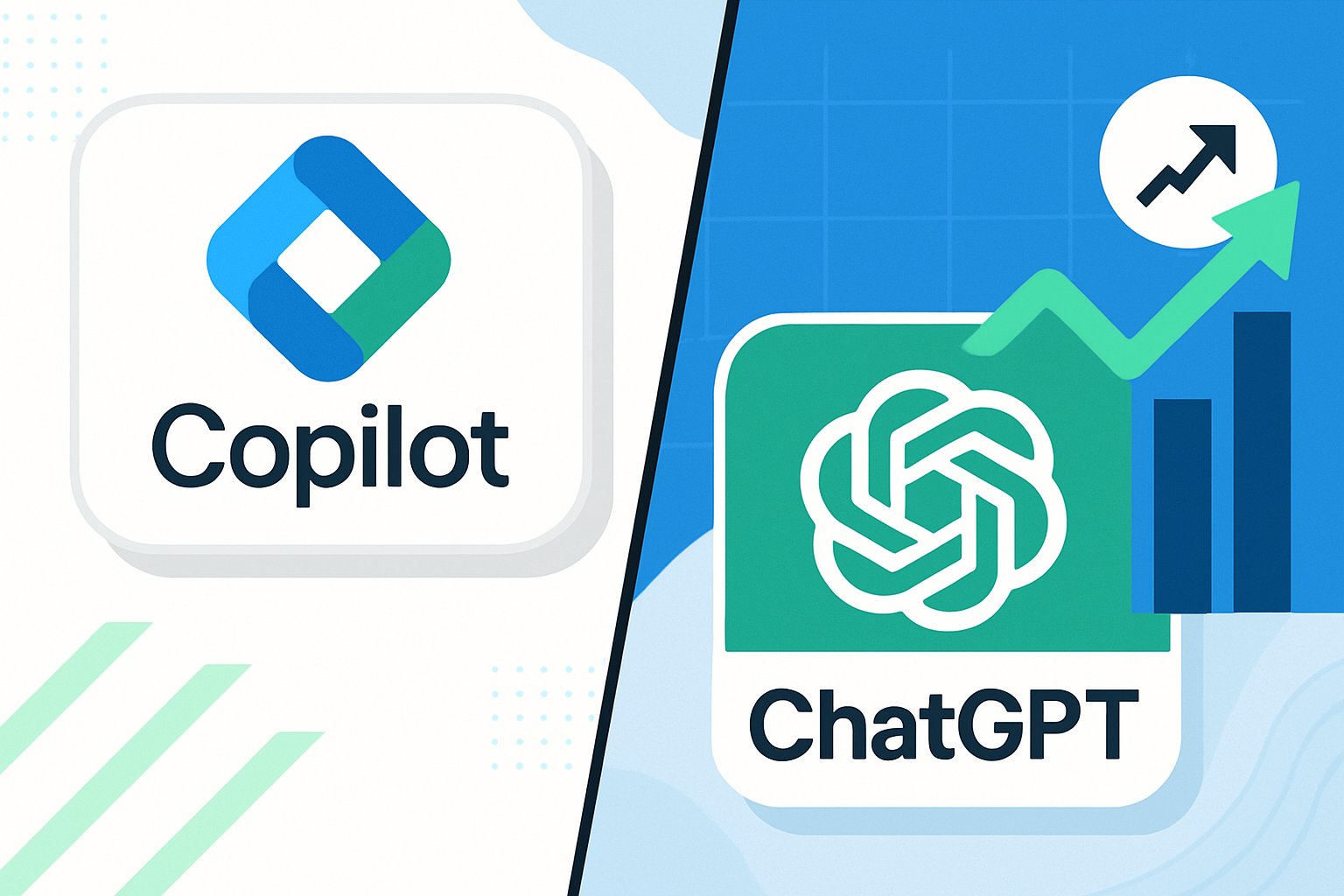
AI CERTS
1 day ago
Survey Ranks Enterprise AI Tools Leaders
GenAI Usage Skyrockets Today
Wharton’s report confirms explosive engagement. Moreover, respondents span industries and maintain revenues above $50 million. Nearly every surveyed enterprise now embeds GenAI in workflows. In contrast, only 43% reported weekly use two years earlier. The acceleration reflects confidence in security policies and clearer governance guidelines.

Top practical tasks include data analysis, meeting summarization, and proposal editing. These everyday activities reinforce habit formation and spur wider software adoption across business units. Consequently, training demand surged, with leaders flagging skills as a rising bottleneck.
These findings illustrate GenAI’s shift from novelty to necessity. However, the next section explains why Microsoft’s assistant claims pole position.
Copilot Integration Advantage Explained
Copilot reaches 58% of enterprises primarily because it lives inside Microsoft 365. Therefore, staff access the assistant without changing daily routines. Furthermore, licensing aligns with existing contracts, simplifying procurement.
Business Insider’s Alistair Barr calls this “the surprising winner” factor. Meanwhile, ChatGPT still boasts 67% usage due to its early mindshare and flexible chat interface. Yet Copilot’s deep integration into email, documents, and spreadsheets yields sticky engagement and defensible ROI.
These dynamics highlight how distribution often beats pure model quality. Subsequently, competitors must embed features where professionals already work.
ROI Becomes Adoption Northstar
Financial outcomes now guide leadership decisions. Approximately 75% of surveyed executives report positive ROI on generative initiatives. Additionally, 72% measure those returns formally, marking a leap from ad-hoc evaluations common in 2024.
- 88% expect GenAI budgets to increase within 12 months
- 54% see payback periods shorter than one year
- 42% reallocate savings toward new innovation programs
These statistics prove budget holders require evidence, not hype. Consequently, vendors must link features to quantifiable benefits. Leaders wanting stronger analytics can pursue the AI Business Intelligence™ certification to sharpen measurement skills.
Positive returns fuel stronger commitments. Nevertheless, governance gaps complicate scale, as the next section details.
Governance And Talent Gaps
Security, ethics, and workforce readiness remain top concerns. Moreover, 61% of respondents cite limited guidelines for prompt auditing. Consequently, risk teams hesitate to green-light broader deployments.
Talent shortages compound the issue. Although GenAI automates content, organizations still need prompt engineers, data stewards, and change managers. Therefore, upskilling ranks high on 2026 roadmaps.
Stronger governance frameworks will unlock larger rollouts. However, competitive pressure continues to reshape the market, as the next ranking reveals.
Tool Rankings Surprise Observers
Beyond Copilot and ChatGPT, Google Gemini secures 49% penetration, reflecting Google Cloud incentives. Conversely, Anthropic Claude trails despite strong safety reputation. Perplexity, DeepSeek, and smaller assistants hover below 20%.
Several factors influence share:
- Seamless integration with legacy systems
- Transparent licensing and compliance assurances
- Vendor commitment to ongoing model updates
These criteria outweigh headline accuracy benchmarks when contracts span thousands of seats. In contrast, standalone chat portals face procurement friction.
The ranking underscores how software adoption hinges on ecosystem fit. Subsequently, forward-looking firms are already planning the next growth phase.
Preparing For Accountable Growth
Wharton researchers emphasize “accountable adoption.” Moreover, they argue the winning organizations pair culture, skills, and guardrails with technology. Jeremy Korst notes, “The next phase is not about adoption; it is about advantage.”
Practical steps for leaders include:
- Create cross-functional AI councils overseeing standards
- Invest in continuous training tied to measurable KPIs
- Pilot niche use cases, then scale proven workflows
- Track business intelligence metrics to validate outcomes
Consequently, certification paths focused on analytics and governance grow attractive. Professionals can deepen expertise through the linked AI Business Intelligence™ curriculum.
These measures position enterprises to sustain benefits. The closing section synthesizes core lessons and urges decisive action.
Conclusion
Generative AI has reached the mainstream, and enterprise AI tools now compete on integration, governance, and ROI delivery. Copilot’s rise demonstrates that ecosystem placement can trump standalone popularity. Meanwhile, leaders prioritizing robust policies and continuous skilling secure stronger returns. Furthermore, aligning projects with clear business intelligence metrics equips firms to justify budget expansion. Consequently, executives should benchmark tool performance, close talent gaps, and pursue specialized learning paths. Explore the AI Business Intelligence™ certification to translate insights into measurable advantage today.



